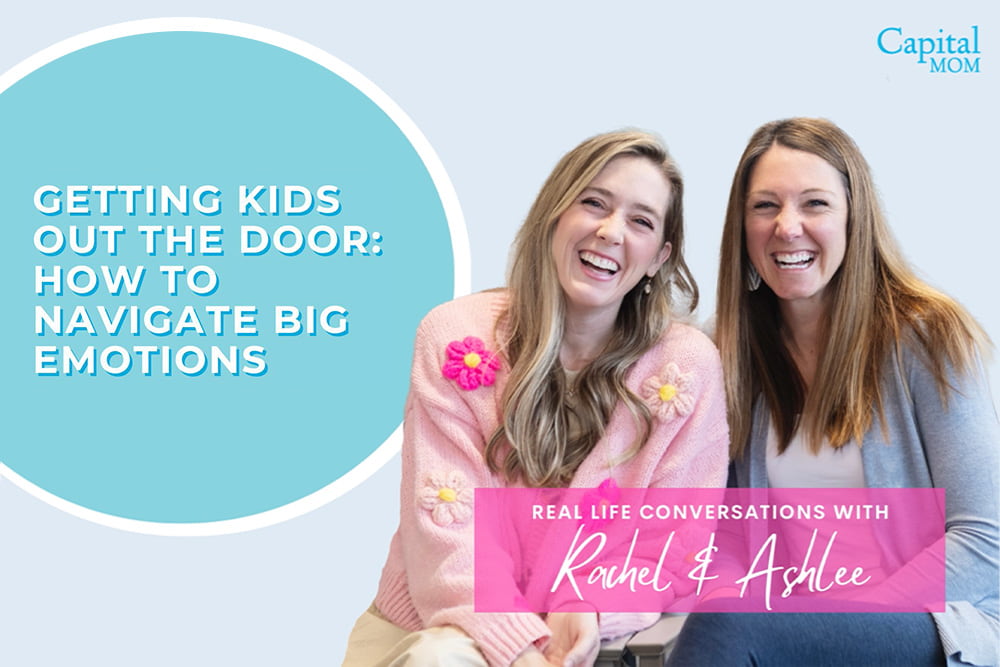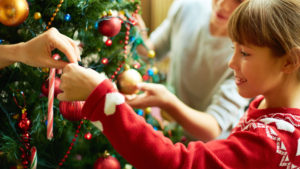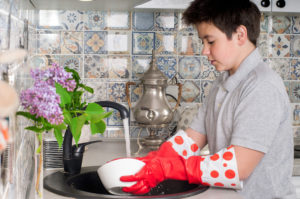Today we’re going to talk about when our kids don’t want to go places and how we can best deal with that.
Ashlee’s Glimmer
The weather has been cold lately and Holmes Lake was frozen over. We went ice skating as a family multiple times and it was so much fun. We made amazing memories. It’s 60 degrees today—and I am excited, don’t get me wrong—but I want it to get cold again so we can get back out! It was just amazing.
Rachel’s Dimmer & Glimmer
We went ice skating once on a very frigid day. Everybody’s cheeks were pink by the time we were done. But it was just as magical. My kids have been asking, “When do we get to go ice skating again?” And the reason we haven’t gone again is my dimmer.
Last month, I mentioned that my husband built a basement build. It’s an amazing spot for our kids with a ladder, a loft and a slide. Our kids have been loving it, Ashlee’s kids have been loving it, and there’s been lots of play dates spent playing on it. But my two-year-old decided to jump off the fourth step of the ladder, which was a big drop.
I wasn’t home. I was teaching a dance class. When I got home, Finley was asleep in John’s arms, and he said, “She just cried herself to sleep. I think she broke her foot.” I called Ashlee right away and told her I needed to take Finley to Urgent Care. It closed in 40 minutes. Ashlee watched my other two kids, which was so amazing. Again, we come back to friendships in motherhood—it takes a village. I was so grateful my other kids didn’t have to sit through the appointment. They could have, but it just worked out so much better for them to be at a friend’s house.
Thankfully, the doctors did not find a break. They were just as shocked as we were due to how much pain she was in. We still don’t really know if it was a bruised bone or a small fracture on her growth plate. She stayed in a splint for a little under a week, and now she’s walking. She’s still favoring her other foot slightly.
It’s a dimmer because it happened, but it’s also a little bit of a glimmer because she’s recovering, and thankfully it’s not broken. It’s amazing how kids’ bodies heal.
Tips for Getting Kids Out the Door
Let’s get to our topic for the day, which is helping our kids leave the house when they’re feeling overwhelmed. We’ll talk about how to handle and be with kids in their emotions.
Parenting Kids with Big Emotions
Rachel: There’s a podcast I’ve started listening to in the last two months or so called the “Calm Parenting Podcast.” It’s by Kirk Martin. If I’m being honest, I tell everybody I know about this podcast. I just think it is parenting gold. It’s very to the point.
Ashlee: He’s direct. You’re going to get a lot of content out of a little bit of time, which is really nice.
Rachel: He talks a lot about helping parents be calm and deal with strong-willed kids and their big emotions. So that’s what we’re going to talk about today—not necessarily a strong-willed kid, but kids having big emotions about leaving and what we can do.
Comparing Parenting Approaches
Rachel: There are two main, completely opposite parenting styles that some parents use: authoritarian and permissive. We’re going to be very careful not to label parents because in certain situations, we can all lean more one way than the other. We are not inherently authoritarian or permissive. We’re human beings responding to situations, and so many outside factors can contribute to how we respond.
Ashlee: Absolutely. I don’t feel comfortable labeling anybody, and I wouldn’t want to do that for myself. We still think it’s helpful to know about these parenting styles so they’re easier to picture in your mind. Once you know about them, you can better know how you want to respond.
Rachel: The first one is authoritarian, which is strict obedience. If you’re trying to get out the door and your kid doesn’t want to, this is the parent who is going to say, “You’re going to get in the car right now because I said so, and I don’t want to hear another word.” Pretty simple.
The other type is permissive. This is more mushy gushy and more about giving into your kids’ feelings. A permissive parent might say something like, “Oh, what’s bugging you? Can you tell me more? I’m so sorry.”
Ashlee: This might even include talking to them more like a baby, which can feel condescending and play into their feelings in the wrong way. We’re not saying not to be kind, but this can be a little too mushy.
Rachel: The problem that can happen with this is that you’re not actually leading your kid to move forward and get out the door. You’re sitting in this feeling, and then you’re both just stagnant. That’s why we want to talk about both of these two types of parenting styles.
Ashlee: With the authoritarian style, you’re not teaching your kid compliance out of connection. It’s compliance out of fear. That’s not something that we want to create, and I imagine that lots of other parents feel the same way, even if that’s something you experienced growing up in your home. We want to teach compliance out of a connection that still gets us moving forward.
To be honest, when I was growing up and learning more about my own communication styles, I was very much in a permissive state myself. When someone came to me with something, I would either be a little judgy, or I would just sit with them, but then I wouldn’t know how to move forward out of that. I didn’t know how to move beyond that, and I needed tools. I’m so grateful that being married, having conversations with counselors and my spouse and reading books has given me more effective communication tools that work for us.
Authoritative Leadership Style
Rachel: Putting those two parenting styles together is the goal. The authoritative leadership style is a mix of authoritarian and permissive. Here’s a glimpse into what that might look like. Say your child is sitting at the door, and they’re crying because they don’t want to go somewhere. You’re not going to say, “Get in the car right now because I said so.” You’re also not going to get mushy gushy. Instead, you’re going to recognize their feelings and connect with them.
An example that was in the podcast was, “Is your tummy kind of hurting right now?” To form a connection, you can say things like, “When I don’t want to go somewhere, I feel similar to that. My tummy also hurts sometimes.” This normalizes the feeling so your kids know that they’re not the only ones who don’t want to go somewhere, or the only ones whose tummies hurt when they don’t want to go somewhere. They’ll feel connected to you and want to hear more. You can then say, “When I don’t want to go somewhere and my tummy hurts, here are some tools for how I get through it.” After all, a lot of the time, once you get there, you end up having fun and being grateful that you went.
Removing the Rush
Rachel: Recently, I’ve been subbing for my seven-year-old’s dance class. I hadn’t taught dance in five years or so. Before I went to the first class, I was sweating and feeling anxious of the unknowns. That would be a great example of telling a child, “This is how I was feeling, and this is what I did. I got there early. I wanted to be prepared. I wanted to make sure I had my music ready. I wanted to make sure the studio was cleared out and prepared.” Say your child has a class they don’t want to go to. You can say things like, “Let’s get there 10 minutes early so you can watch the class before yours and see what the other kids are doing. You can make sure you have a spot for your shoes and your coat. You’ll be prepared.”
Ashlee: I personally am terrible at time management and constantly working on it, but showing up early takes the rush out of it. Anytime you take rush out of something, the emotions go way down. This also gives you the time to manage your kiddos’ emotions when they do pop up.
Rachel: That way, you’re not anxious yourself about being late for a class you already paid for. Your kids can feel that anxiety just as much as you can, and that doesn’t help.
Balancing Understanding & Encouragement
Rachel: I brought up this topic idea to Ashlee last night, and she had a light bulb moment where she realized that this had just happened with her daughter.
Ashlee: Yes, and actually, I had it happen with both my kiddos. I had one kiddo who didn’t want to go to her activity. She was putting up some resistance. I held my ground and said, “I hear you.” Part of it was that she didn’t know which teachers were going to be there that day, and she loves having that consistency. There were going to be unknowns, so I listened to her, but I also said, “You’re going to go. It’s okay.” I wasn’t saying it mean or being forceful. She just knew that I wasn’t going to budge on this one.
She ended up going. She was a little grumpy when she left, but she went. She doesn’t do this very often, so we knew something was up. Dad took her to get a smoothie on the way because he could sense it too, and I love that he responded in that way. The next day, she wasn’t feeling very good. I figured this was probably why, and we talked about it.
The Importance of Being Grounded
Ashlee: Then the next day, my other kiddo needed to get going, and she kept pouting. I lost it. I went into a little spiral about how much I do to try and help her out. She left and I felt terrible. We talked about it when she got back. She’s allowed to have her emotions, but I was not grounded, and it triggered me. I was internally struggling with something so I couldn’t be there for her in that moment.
Giving Yourself & Your Child Grace
Rachel: There are so many factors that contribute to the way that we respond. It can be how much sleep we got the night before, the relationship that we’re currently having with our spouse, or feeling overstimulated by your environment. There are so many things that can make you flip a switch, and then you end up regretting it when the moment passes. Give yourself grace and know that you will not always be perfect. We’re aiming for authoritative leadership, but we realize that it’s not possible 100% of the time because we’re humans.
Ashlee: Absolutely. We are constantly barraged with challenges each day and new situations that we’ve not come up against before as moms. We’re trying to help our kids effectively communicate their emotions and start learning how to do that at a young age, and that is an amazing thing. But emotions are so complex, and our own emotions are going to color how we see certain situations. So have grace. If your immediate response isn’t ideal, take a pause and have grace with yourself knowing you’re trying to do something hard.
Rachel: Our kids are learning this new skill, and they are going to mess up just like we do. They’re not always going to express their emotions in ways we appreciate. They’re going to tick us off. It’s just like a kid learning to tie their shoes. They’re not going to get it on their first try. They’re going to need to try over and over and over again before they get it right. And our emotions are the same way.
Say What You Mean, Just Don’t Say It Mean
Ashlee: Something I’ve been saying this week is, “Say what you mean, but you don’t have to say it mean.” This gives me something to say when my little one says something that comes across mean or demanding. It takes my emotions out of it and helps me not overreact. I can just say, “Hey, bud, I hear you. Say what you mean, just don’t say it mean.”
Parenting Do-Overs
Rachel: I love that. Another thing I have used in the past is the act of a do-over. You can say to your kid, “I actually don’t like how I responded just now. Would you let me try it again? Would you let me have a do-over?” You’re showing your kid that you’re not perfect and would like to try to do better.
Ashlee: The art of repair is amazing. That’s exactly what I did with Anna the other day. When she got home, I wrapped her up in a big, warm embrace and owned what was mine. I told her, “I messed up, but I love you and I support you.”
Rachel: Showing vulnerability when we mess up also gives our kids permission to mess up and not be so hard on themselves.
Ashlee: If you’ve got situations where you’re trying to get your kiddos out the door and emotions are flying all over the place, just know we’re right there with you. You’re not alone. We hope this helps you remember to continue trying to approach it with love and connection. Thank you for joining us this month!

Ashlee Hendricks
Real Life Conversations Host
I am a mom to three awesome kids: Ellie, Anna, and Levi. My husband Jon works as a professor at the UNL Business College. While we are not natives to Lincoln (this year marks five years in Nebraska), I did grow up on a dairy farm in southwest Missouri and feel quite at home here. I work as a full-time mom and a part-time nurse at a clinic here in town.
As a family, we are happiest outside and having adventures. We lived in South Carolina before moving here so we’ve had to toughen up quite a bit! We love biking, camping and anything involving water. I have been supported and inspired by so many amazing women and men along my parenting journey. Rachel and I have talked a lot about our shortcomings and wins as moms. I hope as we share some of our story that you’ll find some relatable information that can nurture and inspire you wherever you are on your journey as a parent. We are all in this together!

Rachel Robinson
Real Life Conversations Host
I was born and raised in Lincoln. I am a stay-at-home-mom to three amazing kids named Ellie, Brecken, and Finley. I worked as a PE teacher at Scott Middle School for 8.5 years and turned into a SAHM when my second kiddo was born. I love being home with my kids. It is so fulfilling to me to be home with them through each stage, to care for them and to be a part of the little details and the big moments in their lives.
My husband, John, is a men’s gymnastics coach at the University of Nebraska. Our kids love to go to the gym and play. We love that they now have a relationship with the college athletes. It is really fun. Go Big Red! I am very excited to be chatting about things motherhood here on CapitalMom. I hope you enjoy and are able to relate as we share our motherhood journeys.









